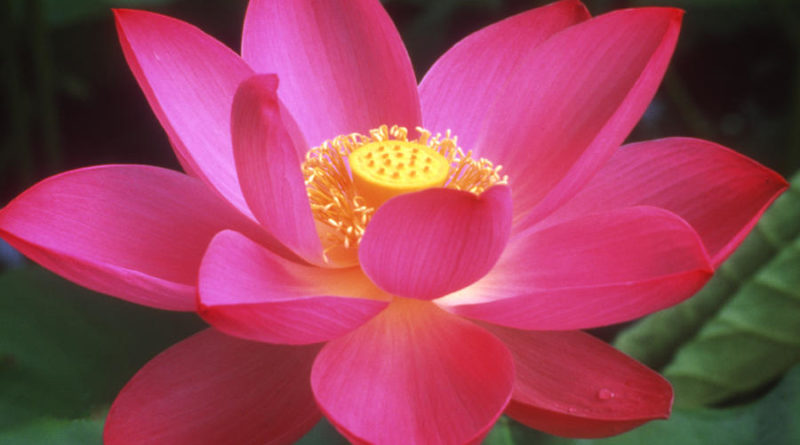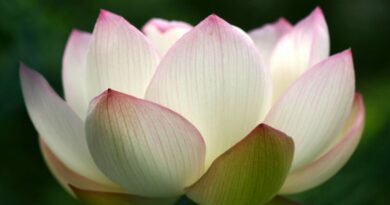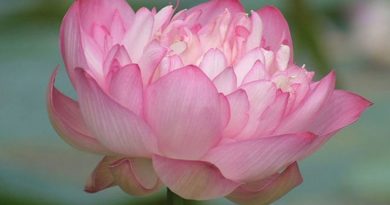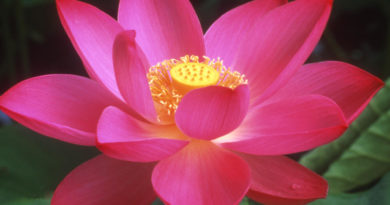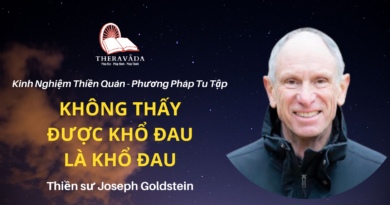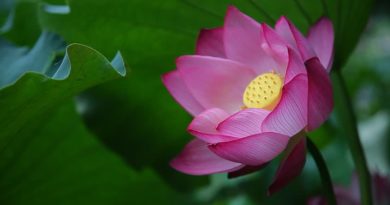THE BASIC METHOD OF MEDITATION – PART II
THE BASIC METHOD OF MEDITATION – PART II
“Silence is so much more productive of wisdom and clarity than thinking.”
In Part 1 of this three-part article, I outlined the goal of this meditation, which is the beautiful silence, stillness and clarity of mind, pregnant with the most profound of insights. Then I pointed out the underlying theme which runs like an unbroken thread throughout all meditation, that is the letting go of material and mental burdens. Lastly, in Part 1, I described at length the practice which leads to what I call the first stage of this meditation, and that first stage is attained when the meditator comfortably abides in the present moment for long, unbroken periods of time. As I wrote in the previous article “The reality of now is magnificent and awesome… Reaching here you have done a great deal. You have let go of the first burden which stops deep meditation.” But having achieved so much, one should go further into the even more beautiful and truthful silence of the mind.
It is helpful, here, to clarify the difference between silent awareness of the present moment and thinking about it. The simile of watching a tennis match on TV is informative. When watching such a match, you may notice that, in fact, there are two matches occurring simultaneously — there is the match that you see on the screen, and there is the match that you hear described by the commentator. Indeed, if an Australian is playing a New Zealander, then the commentary from the Australian presenter or New Zealander presenter is likely to be much different from what actually occurred! Commentary is often biased. In this simile, watching the screen with no commentary stands for silent awareness in meditation, paying attention to the commentary stands for thinking about it. You should realize that you are much closer to Truth when you observe without commentary, when you experience just the silent awareness of the present moment.
Sometimes it is through the inner commentary that we think we know the world. Actually, that inner speech does not know the world at all! It is the inner speech that weaves the delusions that cause suffering. It is the inner speech that causes us to be angry at those we make our enemies, and to have dangerous attachments to those we make our loved ones. Inner speech causes all of life’s problems. It constructs fear and guilt. It creates anxiety and depression. It builds these illusions as surely as the skilful commentator on TV can manipulate an audience to create anger or tears. So if you seek for Truth, you should value silent awareness, considering it more important, when meditating, than any thought whatsoever.
It is the high value that one gives to one’s thoughts that is the major obstacle to silent awareness. Carefully removing the importance one gives to one’s thinking and realizing the value and truthfulness of silent awareness is the insight that makes this second stage — silent awareness of the present moment — possible.
One of the beautiful ways of overcoming the inner commentary is to develop such refined present moment awareness, that you are watching every moment so closely that you simply do not have the time to comment about what has just happened. A thought is often an opinion on what has just happened, e.g. “That was good”, “That was gross”, “What was that?” All of these comments are about an experience which has just passed by. When you are noting, making a comment about an experience which has just passed, then you are not paying attention to the experience which has just arrived. You are dealing with old visitors and neglecting the new visitors coming now!
You may imagine your mind to be a host at a party, meeting the guests as they come in the door. If one guest comes in and you meet them and start talking to them about this that or the other, then you are not doing your duty of paying attention to the new guest that comes in the door. Because a guest comes in the door every moment, all you can do is to greet one and then immediately go on to greet the next one. You cannot afford to engage in even the shortest conversation with any guest, since this would mean you will miss the one coming in next. In meditation, all experiences come through the door of our senses into the mind one by one in succession. If you greet one experience with mindfulness and then get into conversation with your guest, then you will miss the next experience following right behind.
When you are perfectly in the moment with every experience, with every guest which comes in your mind, then you just do not have the space for inner speech. You can not chatter to yourself because you are completely taken up with mindfully greeting everything just as it arrives in your mind. This is refined present moment awareness to the level that it becomes silent awareness of the present in every moment.
You discover, on developing that degree of inner silence, that this is like giving up another great burden. It is as if you have been carrying a big heavy rucksack on your back for forty or fifty years continuously and during that time you have wearily trudged through many many miles. Now you have had the courage and found the wisdom to take that rucksack off and put it on the ground for a while. One feels so immensely relieved, so light, so free because one is now not burdened with that heavy rucksack of inner chatter.
Another useful method of developing silent awareness is to recognize the space between thoughts, between periods of inner chatter. If you attend closely with sharp mindfulness, when one thought ends and before another thought begins — There! That is silent awareness! It may be only momentary at first, but as you recognize that fleeting silence you become accustomed to it, and as you become accustomed to it then the silence lasts longer. You begin to enjoy the silence, once you have found it at last, and that is why it grows. But remember, silence is shy. If silence hears you talking about her, she vanishes immediately!
It would be marvelous for each one of us if we could abandon the inner speech and abide in silent awareness of the present moment long enough to realize how delightful it is. Silence is so much more productive of wisdom and clarity than thinking. When you realize how much more enjoyable and valuable it is to be silent within, then silence becomes more attractive and important to you. The Inner Silence becomes what the mind inclines towards. The mind seeks out silence constantly, to the point where it only thinks if it really has to, only if there is some point to it. Since, at this stage, you have realized that most of our thinking is really pointless anyway, that it gets you nowhere, only giving you many headaches, you gladly and easily spend much time in inner quiet.
The second stage of this meditation, then, is silent awareness of the present moment. You may spend the majority of your time just developing these two stages because if you can get this far then you have gone a long way indeed in your meditation. In that silent awareness of “Just Now” you will experience much peace, joy and consequent wisdom.
If you want to go further, then instead of being silently aware of whatever comes into the mind, you choose silent present moment awareness of just ONE THING. That ONE THING can be the experience of breathing, the idea of loving kindness (Mettā), a coloured circle visualised in the mind (Kasina) or several other, less common, focal points for awareness. Here we will describe the silent present moment awareness of the breath.
Choosing to fix one’s attention on one thing is letting go of diversity and moving to its opposite, unity. As the mind begins to unify, sustaining attention on just one thing, the experience of peace, bliss and power increases significantly. You discover here that the diversity of consciousness, attending to six different senses — like having six telephones on one’s desk ringing at the same time — is such a burden. Letting go of this diversity — only permitting one telephone, a private line at that, on one’s desk — is such a relief it generates bliss. The understanding that diversity is a burden is crucial to being able to settle on the breath.
If you have developed silent awareness of the present moment carefully for long periods of time, then you will find it quite easy to turn that awareness on to the breath and follow that breath from moment to moment without interruption. This is because the two major obstacles to breath meditation have already been subdued. The first of these two obstacles is the mind’s tendency to go off into the past or future, and the second obstacle is the inner speech. This is why I teach the two preliminary stages of present moment awareness and silent awareness of the present moment as a solid preparation for deeper meditation on the breath.
It often happens that meditators start breath meditation when their mind is still jumping around between past and future, and when awareness is being drowned by the inner commentary. With no preparation they find breath meditation so difficult, even impossible and give up in frustration. They give up because they did not start at the right place. They did not perform the preparatory work before taking up the breath as a focus of their attention. However, if your mind has been well prepared by completing these first two stages, then you will find when you turn to the breath, you can sustain your attention on it with ease. If you find it difficult to keep attention on your breath then this is a sign that you rushed the first two stages. Go back to the preliminary exercises! Careful patience is the fastest way.
When you focus on the breath, you focus on the experience of the breath happening now. You experience “that which tells you what the breath is doing”, whether it is going in or out or in between. Some teachers say to watch the breath at the tip of the nose, some say to watch it at the abdomen and some say to move it here and then move it there. I have found through experience that it does not matter where you watch the breath. In fact, it is best not to locate the breath anywhere! If you locate the breath at the tip of your nose, then it becomes nose awareness, not breath awareness; and if you locate it at your abdomen, then it becomes abdomen awareness. Just ask yourself the question right now “Am I breathing in or am I breathing out?” How do you know? There! That experience which tells you what the breath is doing, that is what you focus on in breath meditation. Let go of concern about where this experience is located; just focus on the experience itself.
A common hindrance at this stage is the tendency to control the breathing, and this makes the breathing uncomfortable. To overcome this hindrance, imagine that you are just a passenger in a car looking through the window at your breath. You are not the driver, nor a “back seat driver”, so stop giving orders, let go and enjoy the ride. Let the breath do the breathing while you simply watch without interfering.
When you know the breath is going in, or the breath is going out, for say one hundred breaths in a row, not missing one, then you have achieved what I call the third stage of this meditation, sustained attention on the breath. This again is more peaceful and joyful than the previous stage. To go deeper, you now aim for full sustained attention on the breath.
This fourth stage, or full sustained attention on the breath, occurs when one’s attention expands to take in every single moment of the breath. You know the in-breath at the very first moment, when the first sensation of in-breathing arises. Then you observe those sensations develop gradually through the whole course of one in-breath, not missing even a moment of the in-breath. When that in-breath finishes, you know that moment, you see in your mind that last movement of the in-breath. You then see the next moment as a pause between breaths, and then many more pauses until the out-breath begins. You see the first moment of the out-breath and each subsequent sensation as the out-breath evolves, until the out-breath disappears when its function is complete. All this is done in silence and just in the present moment.
You experience every part of each in-breath and out-breath, continuously for many hundred breaths in a row. This is why this stage is called “FULL sustained attention on the breath’. You cannot reach this stage through force, through holding or gripping. You can only attain this degree of stillness by letting go of everything in the entire universe, except for this momentary experience of breath happening silently now. “You” don’t reach this stage; the mind reaches this stage. The mind does the work itself. The mind recognizes this stage to be a very peaceful and pleasant abiding, just being alone with the breath. This is where the “doer”, the major part of one’s ego, starts to disappear.
You will find that progress happens effortlessly at this stage of the meditation. You just have to get out of the way, let go, and watch it all happen. The mind will automatically incline, if you only let it, towards this very simple, peaceful and delicious unity of being alone with one thing, just being with the breath in each and every moment. This is the unity of mind, the unity in the moment, the unity in stillness.
The fourth stage is what I call the “springboard” of meditation, because from here one can dive into the blissful states. When you simply maintain this unity of consciousness, by not interfering, the breath will begin to disappear. The breath appears to fade away as the mind focuses instead on what is at the centre of the experience of breath, which is the awesome peace, freedom and bliss.
At this stage I use the term “the beautiful breath”. Here the mind recognizes that this peaceful breath is extraordinarily beautiful. You are aware of this beautiful breath continuously, moment after moment, with no break in the chain of experience. You are only aware of the beautiful breath, without effort, and for a very long time.
Now you let the breath disappear and all that is left is “the beautiful”. Disembodied beauty becomes the sole object of the mind. The mind is now taking its own object. You are now not aware at all of breath, body, thought sound or the world outside. All that you are aware of is beauty, peace, bliss, light or whatever your perception will later call it. You are experiencing only beauty, with nothing being beautiful, continuously, effortlessly. You have long ago let go of chatter, let go of descriptions and assessments. Here, the mind is that still that you can not say anything.
You are just experiencing the first flowering of bliss in the mind. That bliss will develop, grow, become very firm and strong. Thus you enter into those states of meditation called Jhāna. But that is for Part 3 of this booklet!

